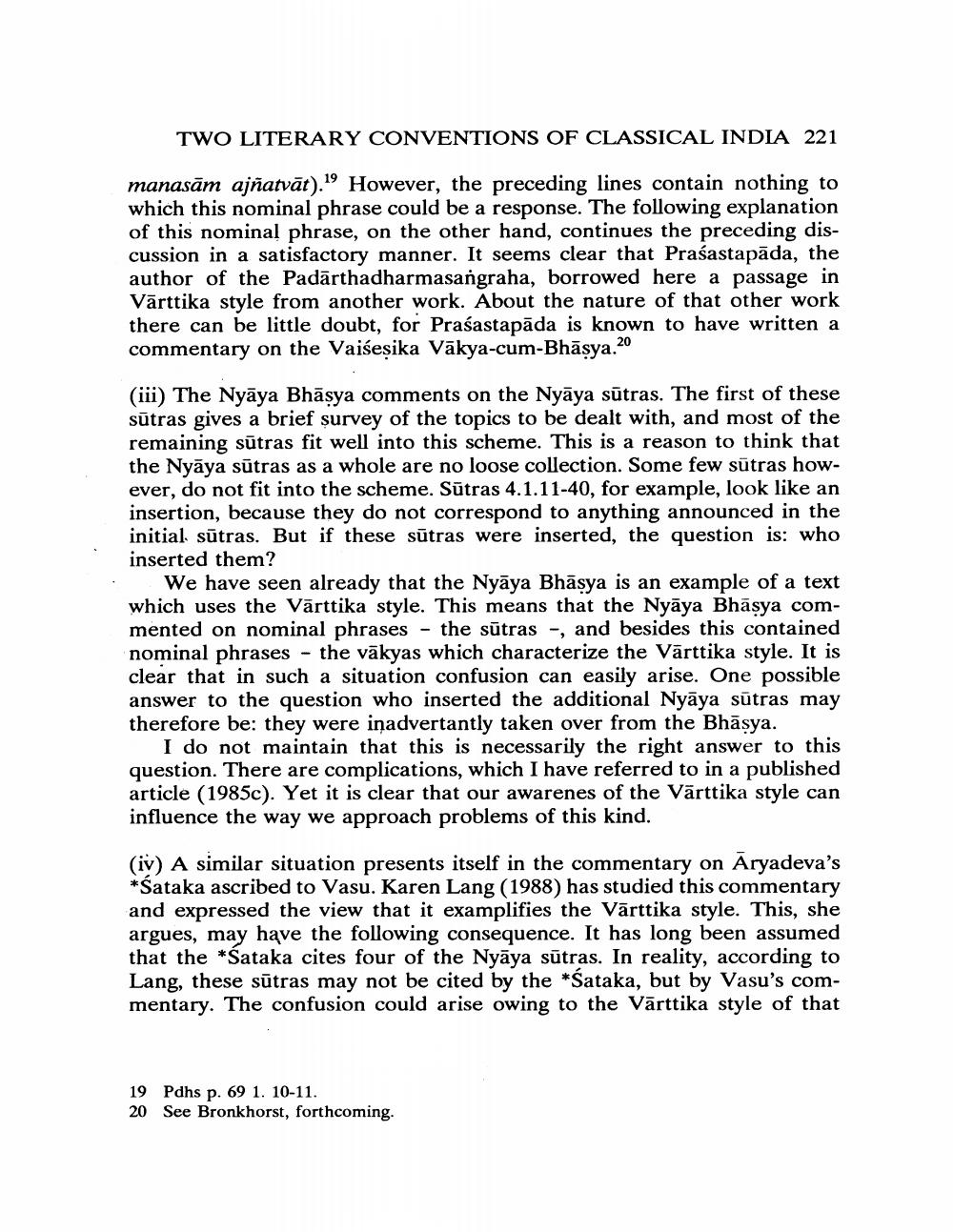________________
TWO LITERARY CONVENTIONS OF CLASSICAL INDIA 221
manasām ajñatvāt).19 However, the preceding lines contain nothing to which this nominal phrase could be a response. The following explanation of this nominal phrase, on the other hand, continues the preceding discussion in a satisfactory manner. It seems clear that Prasastapāda, the author of the Padarthadharmasangraha, borrowed here a passage in Värttika style from another work. About the nature of that other work there can be little doubt, for Prasastapäda is known to have written a commentary on the Vaiśesika Vākya-cum-Bhāṣya.20
(iii) The Nyaya Bhāṣya comments on the Nyaya sutras. The first of these sūtras gives a brief survey of the topics to be dealt with, and most of the remaining sutras fit well into this scheme. This is a reason to think that the Nyāya sūtras as a whole are no loose collection. Some few sūtras however, do not fit into the scheme. Sūtras 4.1.11-40, for example, look like an insertion, because they do not correspond to anything announced in the initial sütras. But if these sutras were inserted, the question is: who inserted them?
We have seen already that the Nyaya Bhasya is an example of a text which uses the Värttika style. This means that the Nyaya Bhāṣya commented on nominal phrases - the sūtras -, and besides this contained nominal phrases the väkyas which characterize the Värttika style. It is clear that in such a situation confusion can easily arise. One possible answer to the question who inserted the additional Nyaya sūtras may therefore be: they were inadvertantly taken over from the Bhāṣya.
I do not maintain that this is necessarily the right answer to this question. There are complications, which I have referred to in a published article (1985c). Yet it is clear that our awarenes of the Varttika style can influence the way we approach problems of this kind.
(iv) A similar situation presents itself in the commentary on Aryadeva's *Sataka ascribed to Vasu. Karen Lang (1988) has studied this commentary and expressed the view that it examplifies the Värttika style. This, she argues, may have the following consequence. It has long been assumed that the *Sataka cites four of the Nyaya sutras. In reality, according to Lang, these sutras may not be cited by the *Sataka, but by Vasu's commentary. The confusion could arise owing to the Värttika style of that
19 Pdhs p. 69 1. 10-11.
20 See Bronkhorst, forthcoming.




